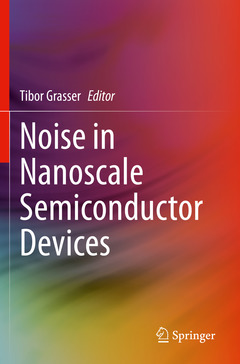Description
Noise in Nanoscale Semiconductor Devices, 1st ed. 2020
Coordinator: Grasser Tibor
Language: English
Subject for Noise in Nanoscale Semiconductor Devices:
Publication date: 04-2021
Support: Print on demand
Publication date: 04-2020
729 p. · 15.5x23.5 cm · Hardback
Description
/li>Biography
/li>Comment
/li>
This book summarizes the state-of-the-art, regarding noise in nanometer semiconductor devices. Readers will benefit from this leading-edge research, aimed at increasing reliability based on physical microscopic models. Authors discuss the most recent developments in the understanding of point defects, e.g. via ab initio calculations or intricate measurements, which have paved the way to more physics-based noise models which are applicable to a wider range of materials and features, e.g. III-V materials, 2D materials, and multi-state defects.
- Describes the state-of-the-art, regarding noise in nanometer semiconductor devices;
- Enables readers to design more reliable semiconductor devices;
- Offers the most up-to-date information on point defects, based on physical microscopic models.




